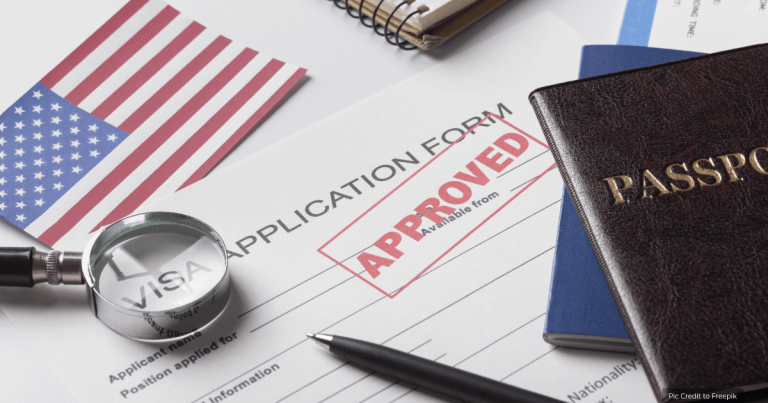Admission for international student in USA
Studying in the USA offers international students a chance to experience world-class education, cultural diversity, and extensive networking opportunities. However, before embarking on this journey, it is essential to understand the admission process and requirements.
Advertisements
2. Researching Universities and Programs
The first step in the admission process is researching universities and programs that align with your academic goals and interests. Consider factors such as the reputation of the institution, available scholarships, program curriculum, and location. Utilize online resources, university websites, and student forums to gather information and make informed decisions.
3. Admission Requirements
To gain admission to a U.S. university, international students must fulfill specific requirements. These requirements typically include academic credentials, standardized tests, and English language proficiency.
– Academic Credentials
Universities usually require international students to submit their academic transcripts, diplomas, or certificates from previous educational institutions. It is essential to have these documents translated and evaluated by recognized credential evaluation services if they are not in English.
– Standardized Tests
Most universities require international students to take standardized tests such as the SAT (Scholastic Assessment Test) or ACT (American College Testing). Additionally, specific programs may have additional test requirements, such as the GRE (Graduate Record Examination) for graduate studies or the TOEFL (Test of English as a Foreign Language) for English language proficiency.
Advertisements
– English Language Proficiency
Proficiency in English is crucial for academic success in the USA. International students are often required to demonstrate their English language skills by taking tests such as the TOEFL or IELTS (International English Language Testing System).
4. Financial Planning
Studying in the USA can be financially demanding. It is essential to plan and budget for tuition fees, living expenses, health insurance, and other related costs. Explore scholarship opportunities, financial aid options, and consider working on-campus, if permitted, to help finance your education.
5. Application Process
Once you have identified the universities and programs of interest, it’s time to start the application process.
– Online Application
Most universities have an online application portal where you can submit your application. Fill out the required information accurately, and ensure that you meet the application deadlines.
– Statement of Purpose
A statement of purpose is a crucial part of the application process. It allows you to showcase your motivation, academic goals, and future aspirations. Take time to craft a compelling and personalized statement that reflects your passion and suitability for the chosen program.
Advertisements
– Letters of Recommendation
Many universities require letters of recommendation from teachers, professors, or mentors who can attest to your academic abilities and personal qualities. Choose recommenders who know you well and can provide strong endorsements.
– Transcripts and Certificates
Submit your academic transcripts and certificates as requested by the university. Ensure that these documents are accurately translated and evaluated if required.
– Application Fees
Some universities charge application fees. Be prepared to pay these fees as part of the application process. Fee waivers may be available for students who demonstrate financial need.
Advertisements
6. Visa Process
Once you receive an acceptance letter from a U.S. university, you must initiate the visa process to study in the USA.
– Student Visa Types
The most common student visa for academic studies is the F-1 visa. There are also other visa categories for specific purposes, such as the J-1 visa for exchange visitors or the M-1 visa for vocational or non-academic programs.
– Required Documentation
Prepare the necessary documentation for your visa application, including the I-20 form issued by the university, proof of financial support, passport, and photographs. Check the official website of the U.S. embassy or consulate in your country for the specific requirements.
– SEVIS Fee
Pay the SEVIS (Student and Exchange Visitor Information System) fee, which is required for F-1 visa applicants. This fee supports the maintenance of the SEVIS database and student tracking system.
– Visa Interview
Schedule and attend a visa interview at the U.S. embassy or consulate in your country. Be prepared to answer questions about your educational plans, financial situation, and ties to your home country. Present all required documents and demonstrate genuine intent to study in the USA.
7. Preparing for Arrival
As your departure date approaches, there are several essential preparations to ensure a smooth transition to studying in the USA.
Housing
Research your housing options and make arrangements in advance. Universities often provide on-campus housing for international students or offer assistance in finding suitable off-campus accommodations.
Health Insurance
International students are generally required to have health insurance coverage. Familiarize yourself with the university’s health insurance policies and consider obtaining additional coverage if necessary.
International Student Orientation
Attend the international student orientation program offered by your university. This orientation will provide valuable information about academic life, campus resources, cultural adjustment, and immigration regulations.
Conclusion
Pursuing higher education as an international student in the USA can be a life-changing experience. By following the steps outlined in this article, you will be well-prepared to navigate the admission process and embark on a rewarding educational journey.
FAQs (Frequently Asked Questions)
Can I work while studying in the USA?
Yes, international students with an F-1 visa are generally allowed to work on-campus part-time during the academic year and full-time during breaks. However, there are certain restrictions and guidelines to follow.
Are scholarships available for international students?
Yes, many universities offer scholarships specifically for international students. Additionally, there are external scholarship opportunities and government-funded programs that can provide financial support.
How can I find a suitable university in the USA?
Researching universities based on your academic interests, location preferences, and financial considerations is a good starting point. Utilize university rankings, online resources, and seek guidance from educational consultants if needed.
What should I do if my visa application is denied?
If your visa application is denied, you can reapply after addressing the reasons for the denial. It is essential to carefully review the rejection notice and seek assistance from the university’s international student office or an immigration lawyer if necessary.
Are there any resources for international students to adapt to the American culture?
Universities typically offer various resources and support services to help international students adapt to the American culture. These may include cultural clubs, language programs, and mentoring initiatives. Take advantage of these resources to enhance your cultural experience.
Advertisements






